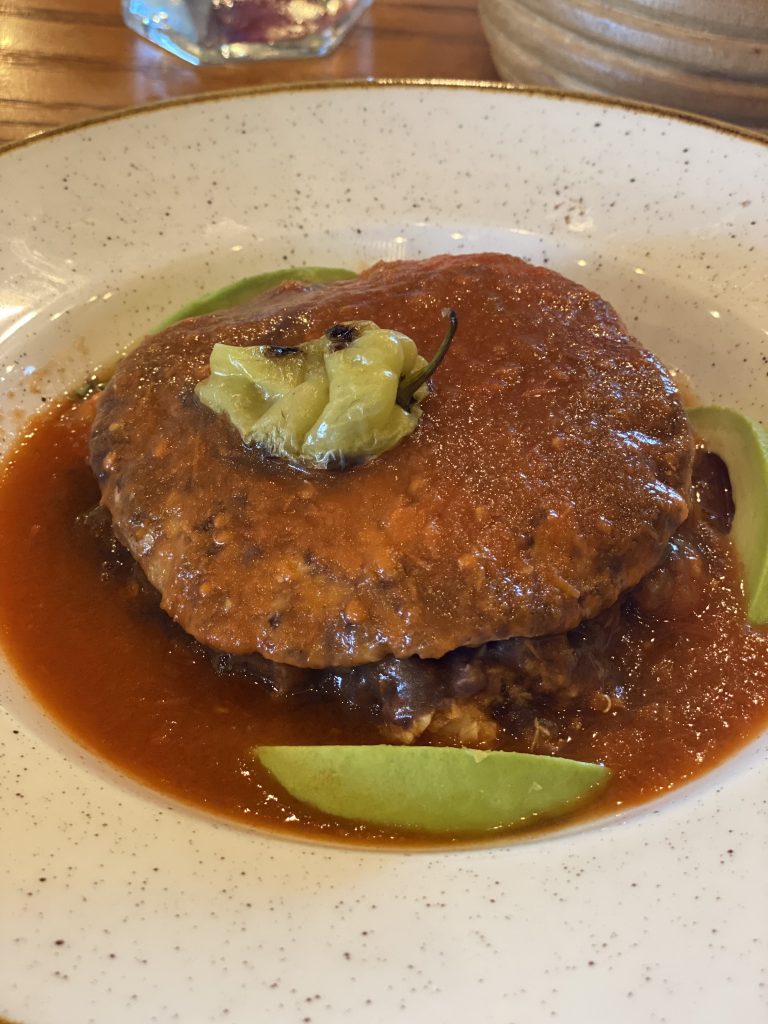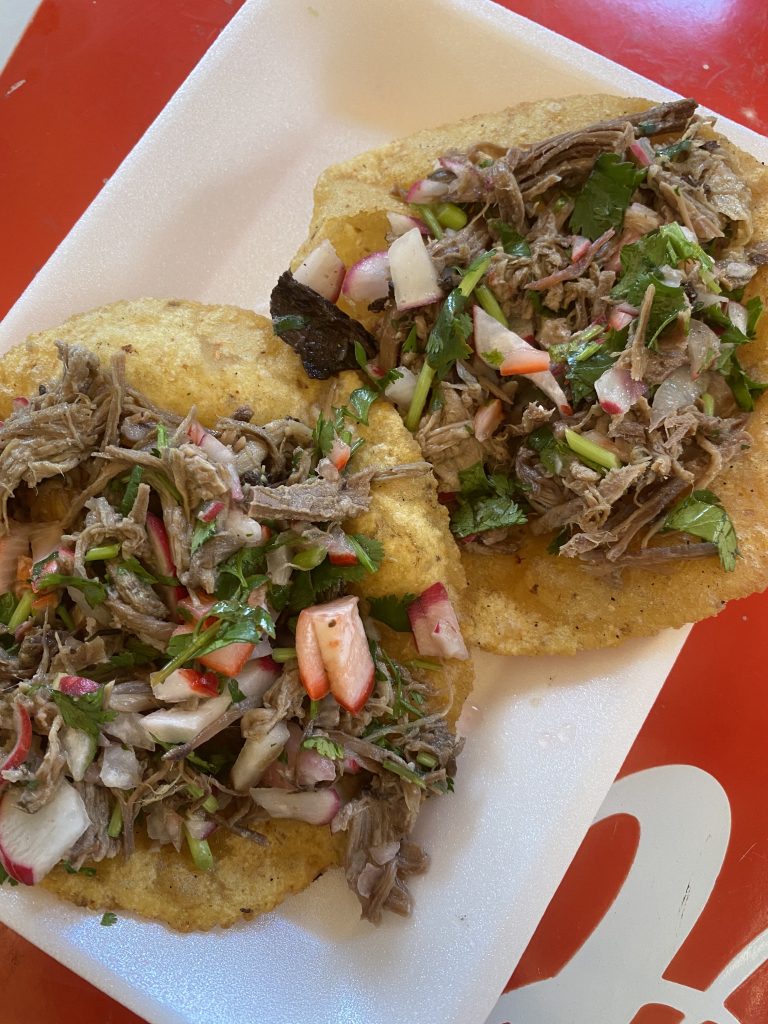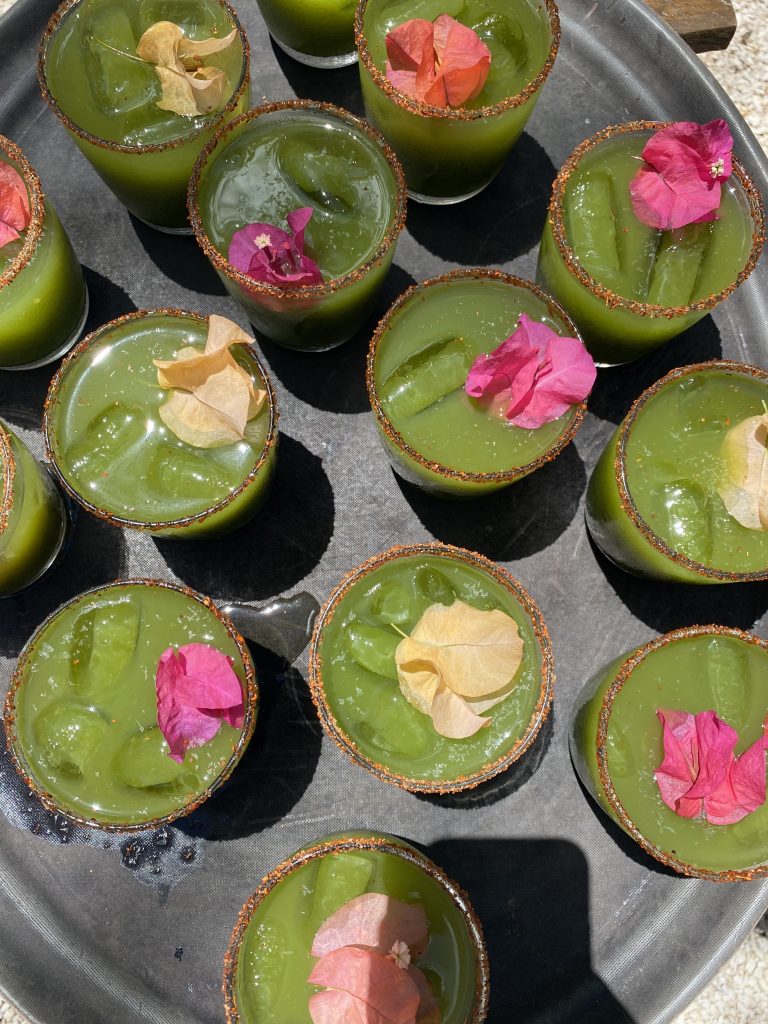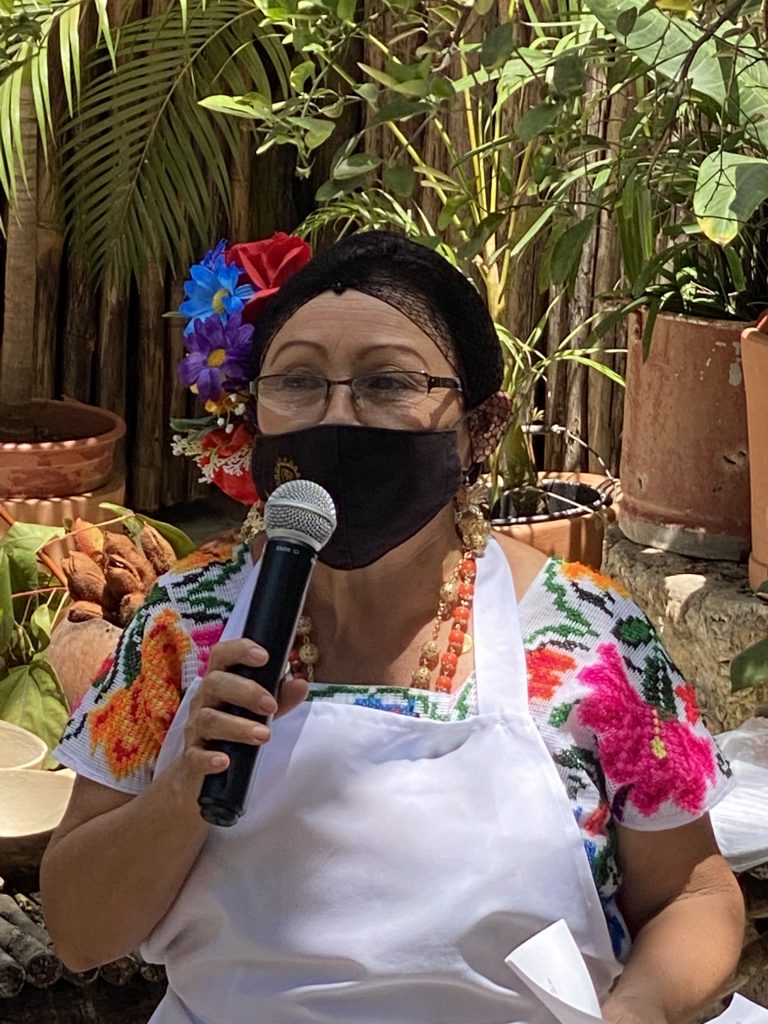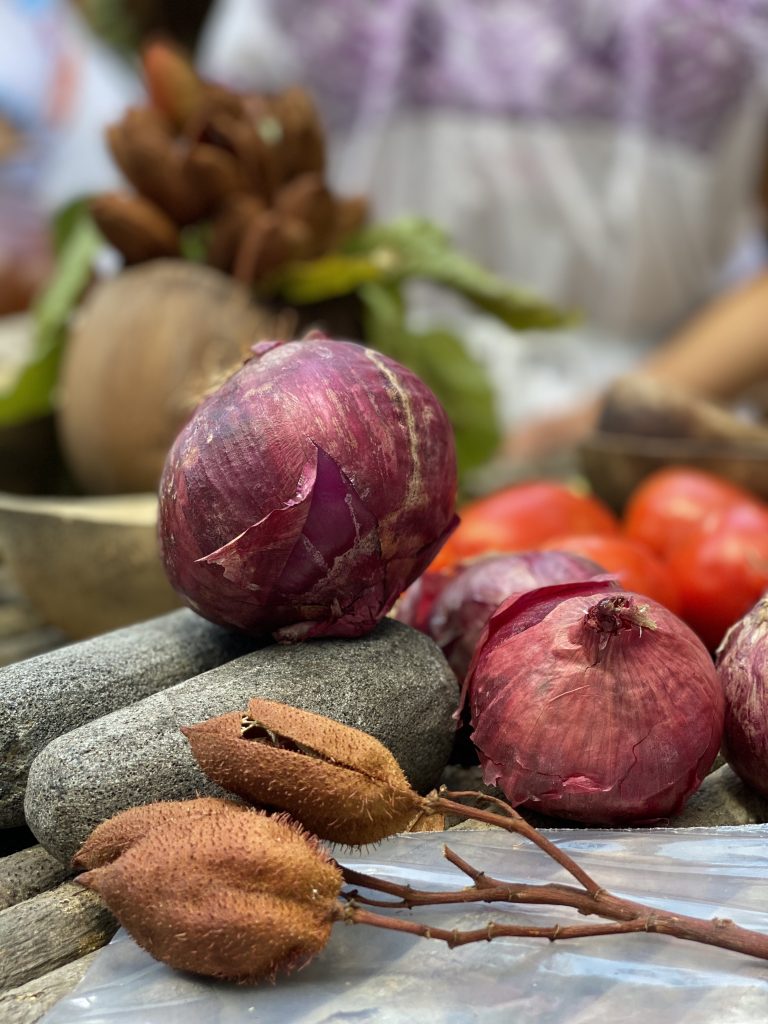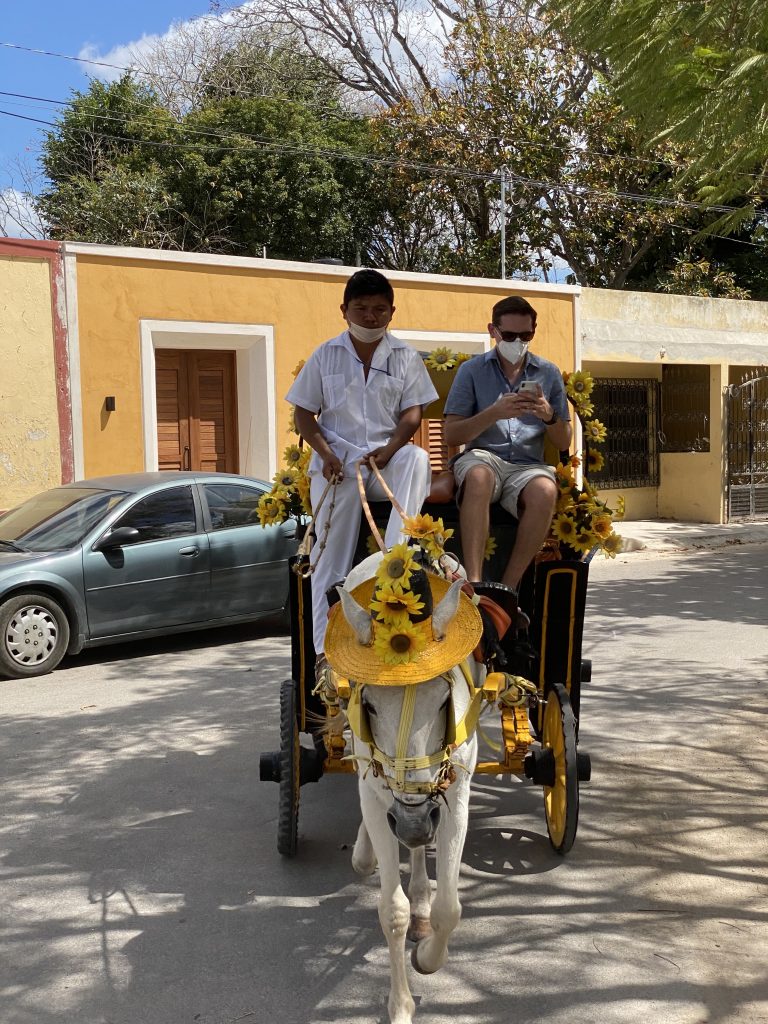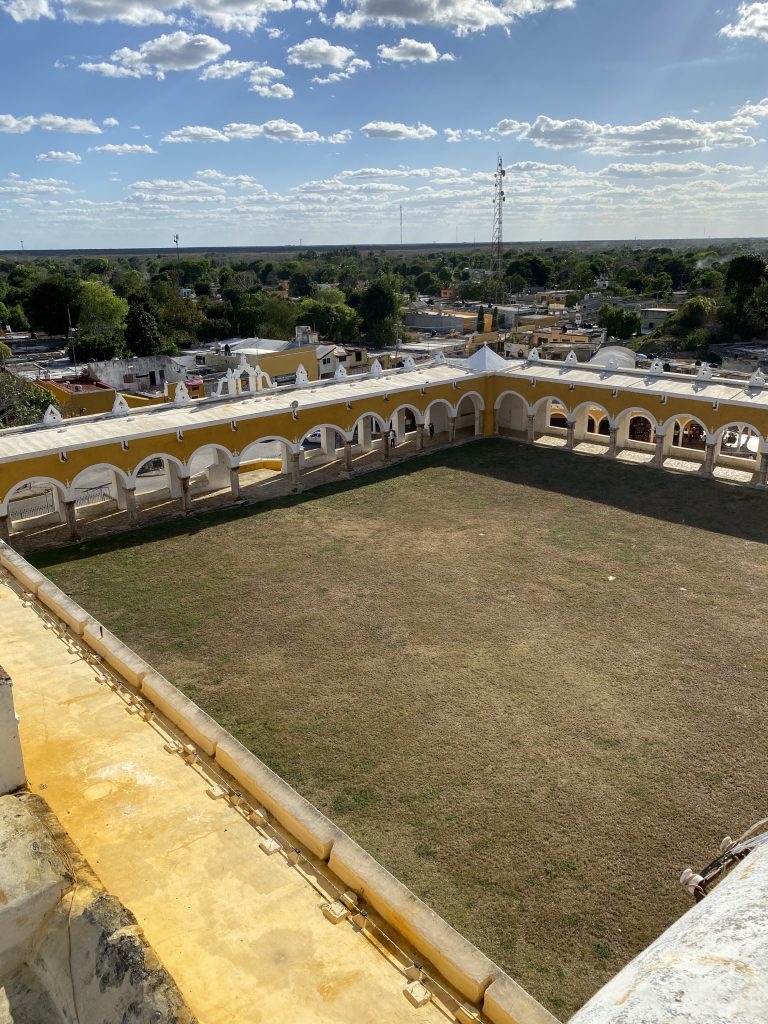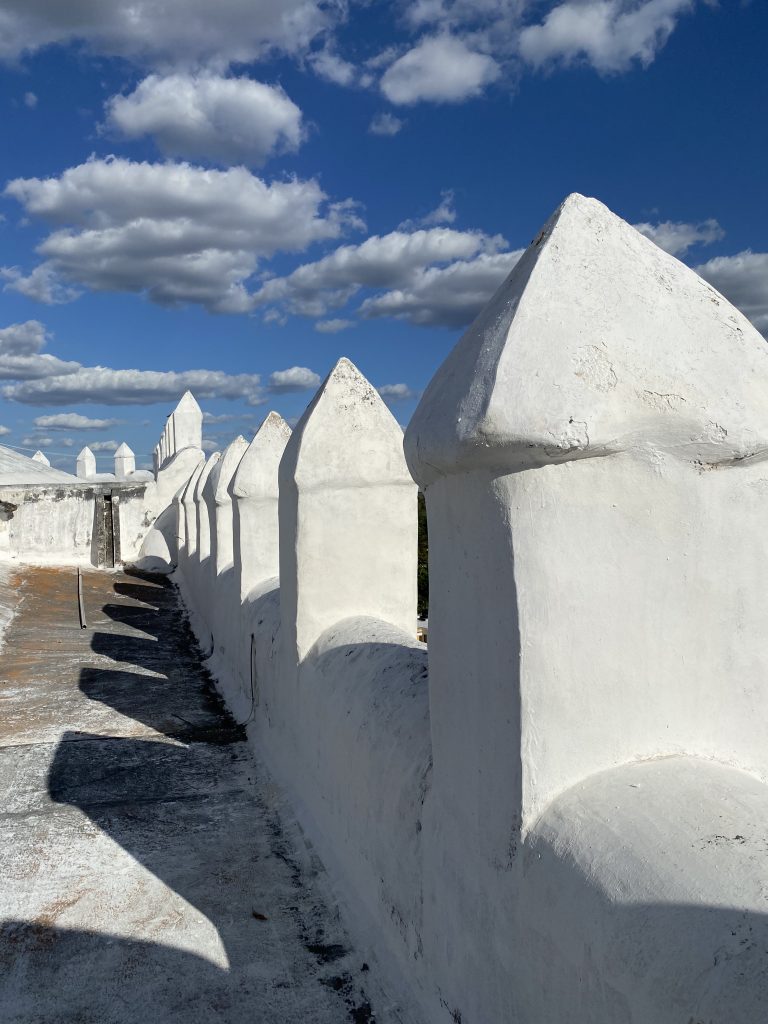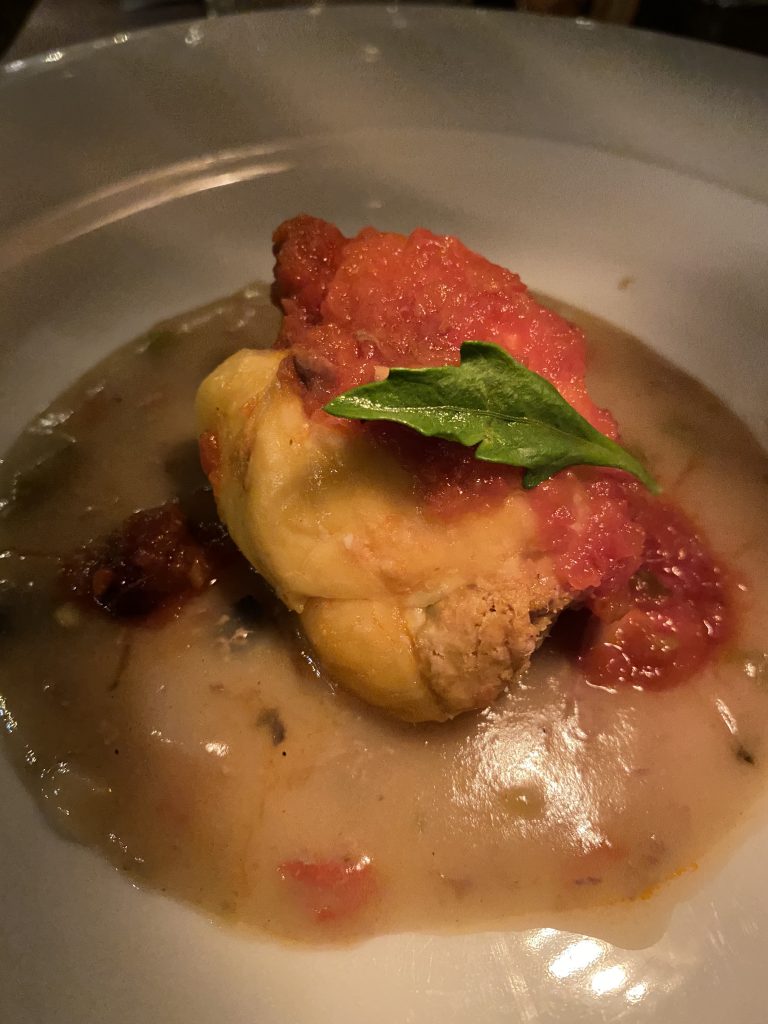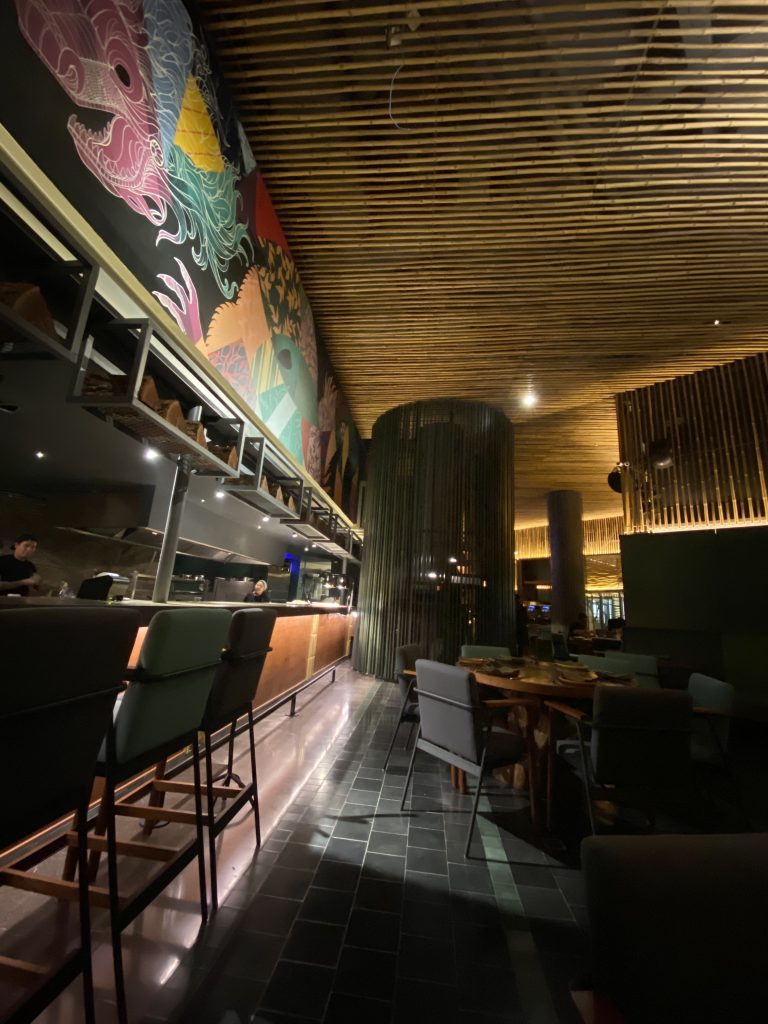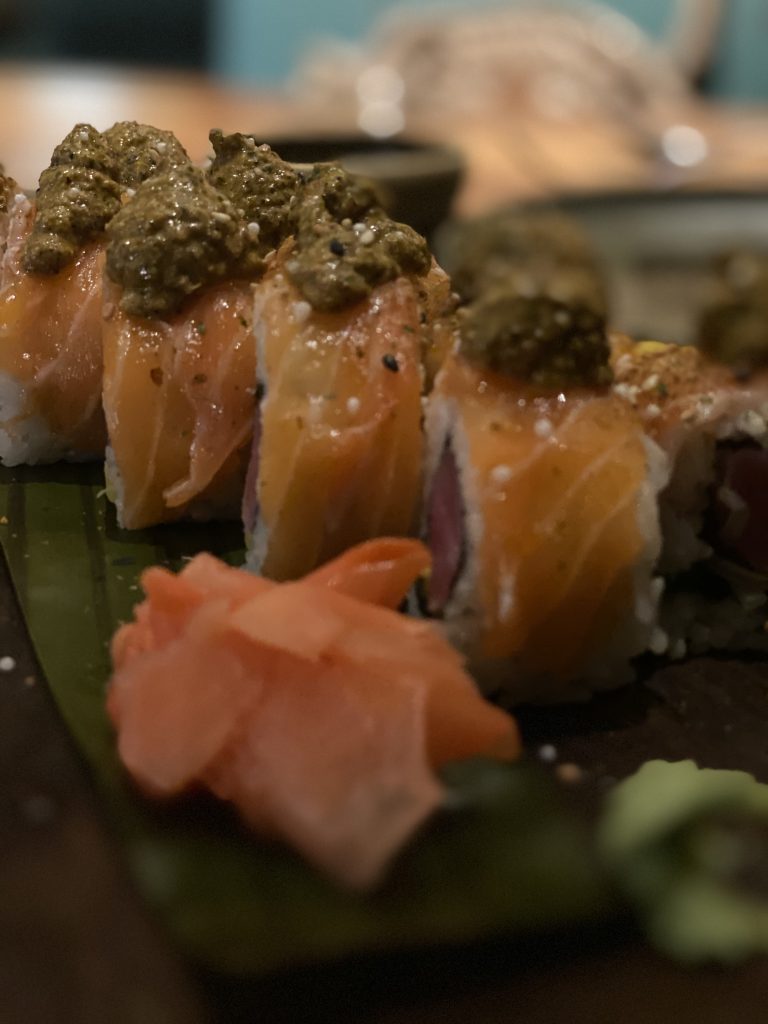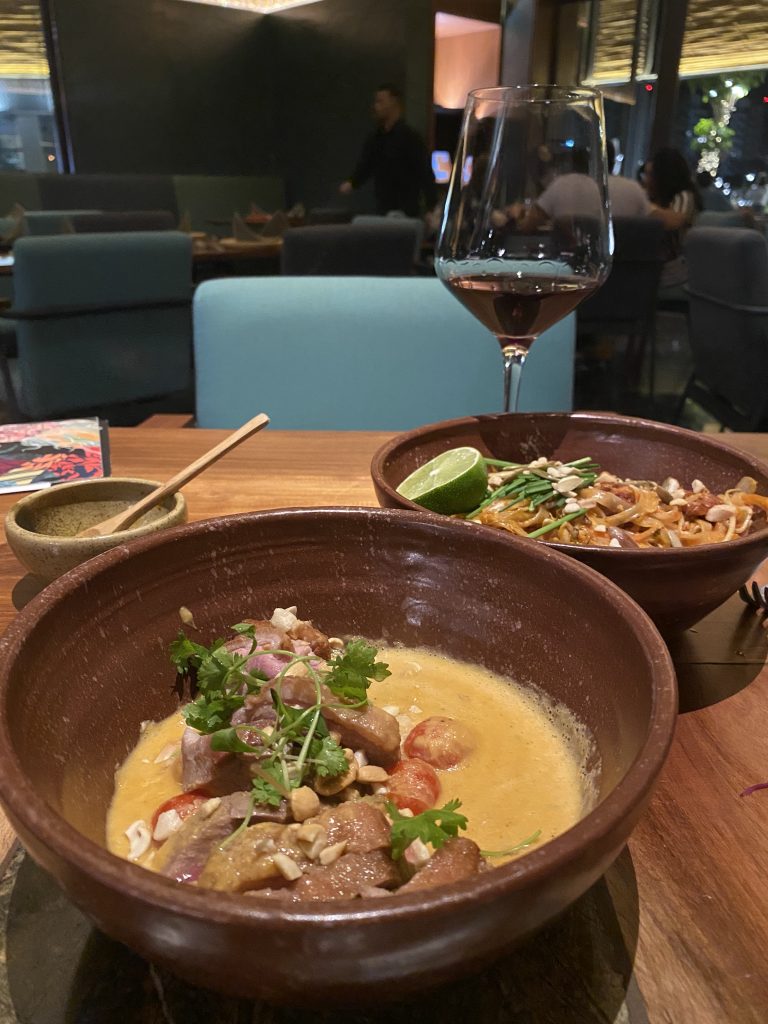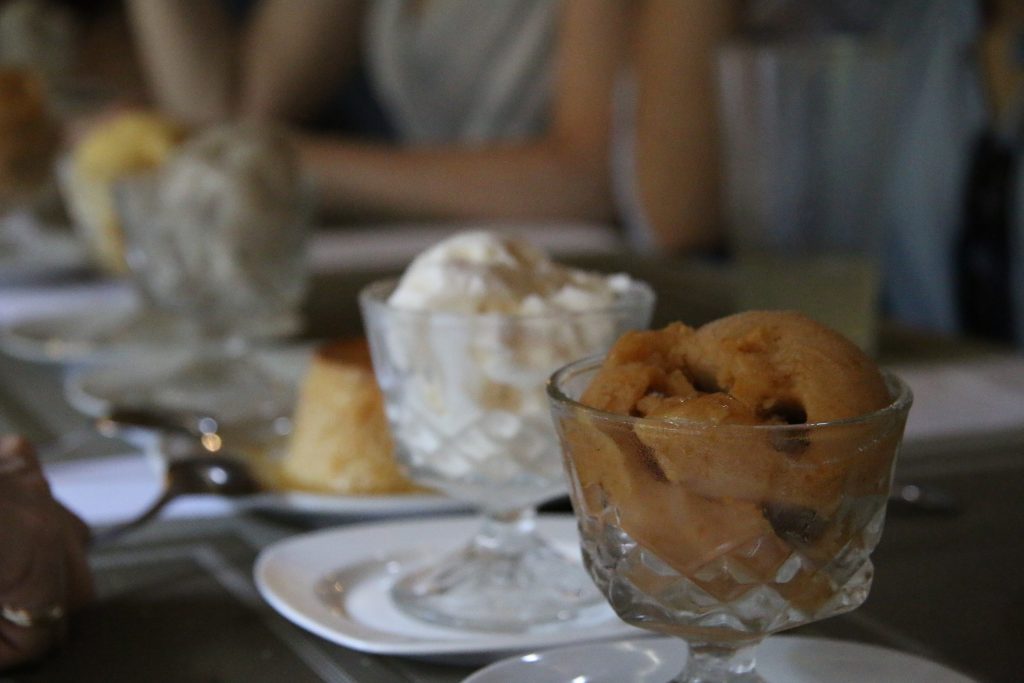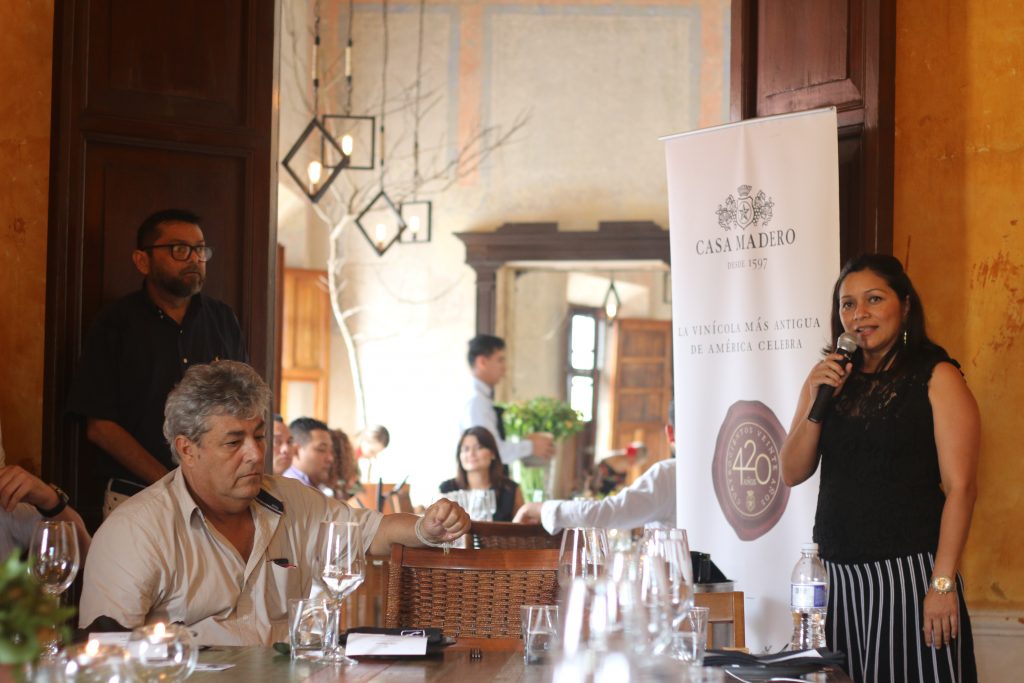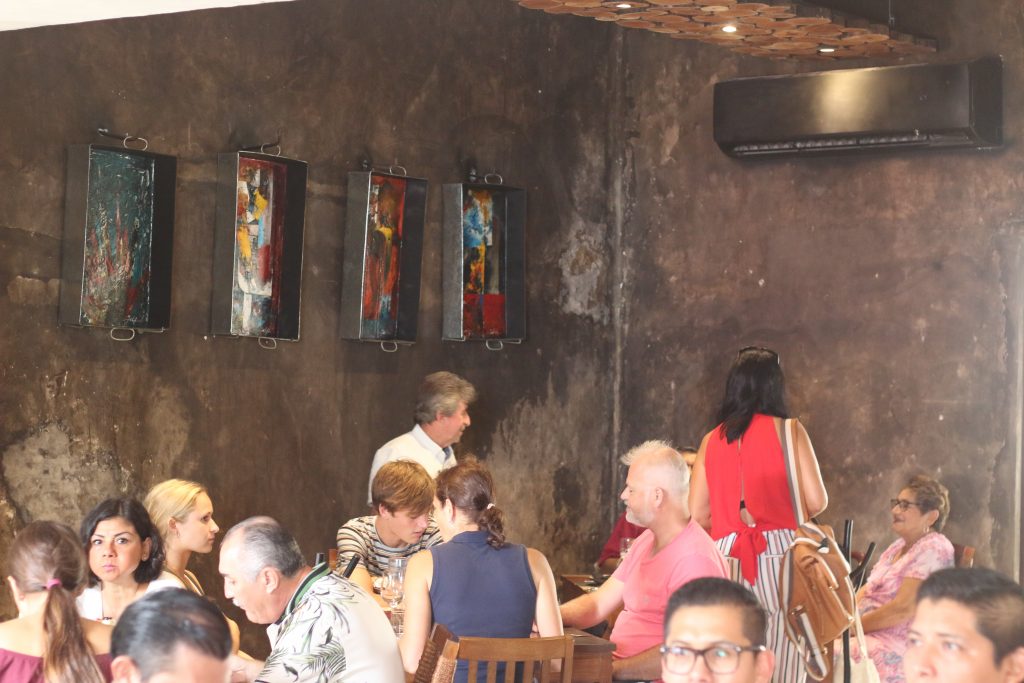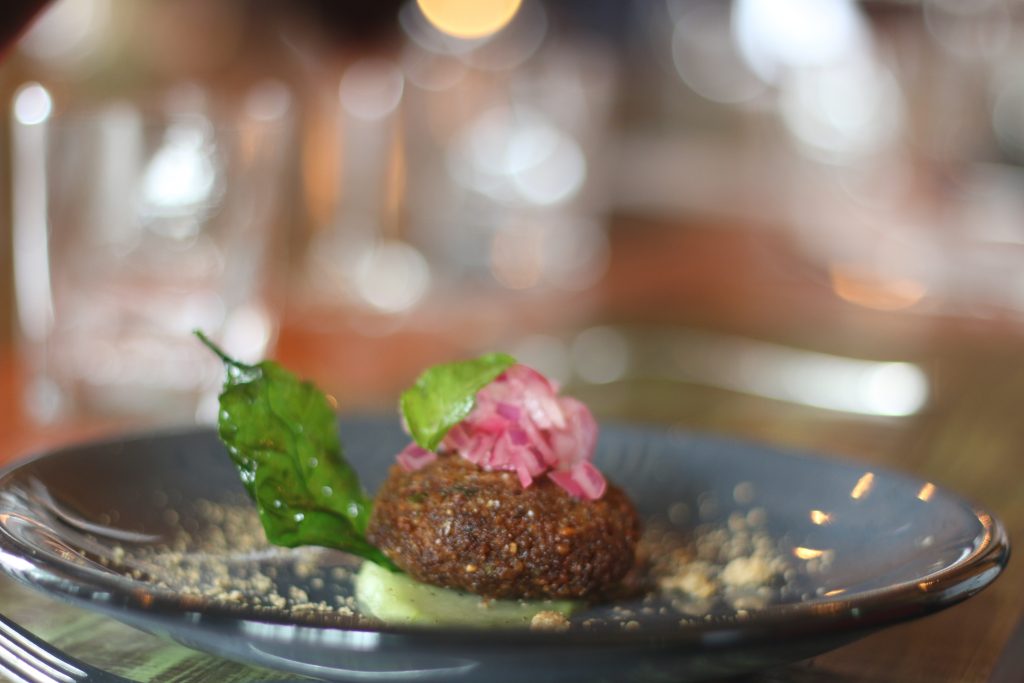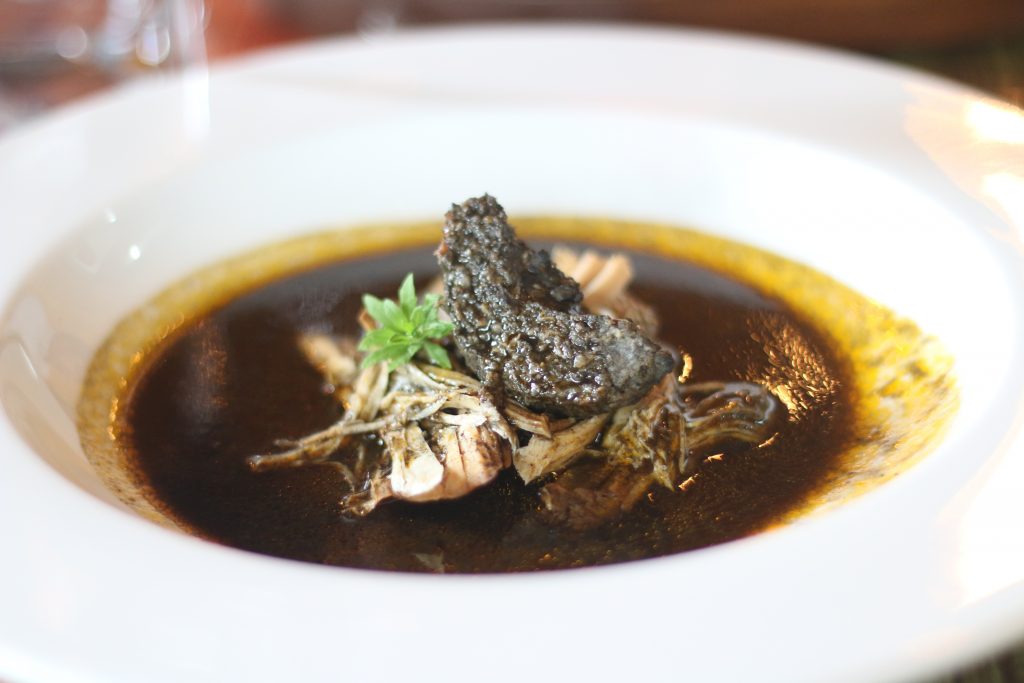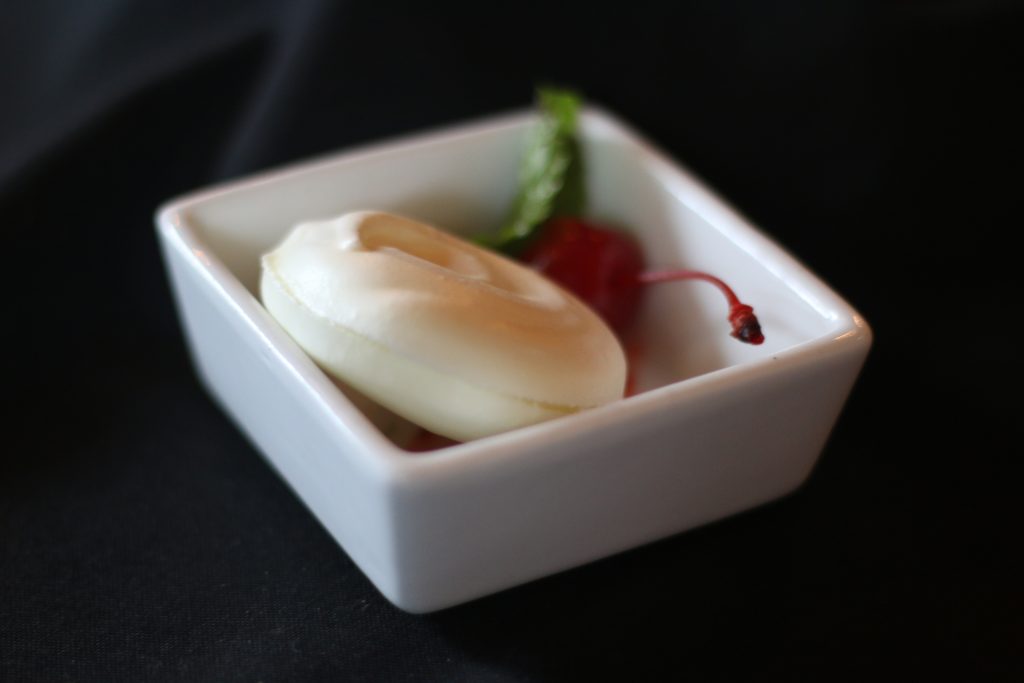The Critic and BH along with MiniCritic, enjoyed a solid, good, Yucatecan lunch on Sunday at the new-ish and already very popular Museo de la Gastronomia Yucateca. (Note and hola to Jan Morgan: the information on where it is etc. is in the link which is the name)
First of all, this is a gigantic restaurant especially compared with the cramped quarters of the also popular Chaya Maya or others, probably because it is an old colonial-era home of one of the henequen barons from back in the day. So you have a huge interior open-air patio surrounded by terraces and rooms which make up the area for tables. Each of the rooms features a henequen (sisal) based theme that is still being completed and will be finished very soon.
In the back, there is a re-creation of a small Mayan “village” complete with the requisite kitchen structure where two or three mestiza women make hand-made tortillas. Other chozas feature information and displays on ingredients used in Yucatecan cooking. Explanations are in Spanish and English, and the Critic is happy to report that the translations are pretty good. Also in the back yard is the pib area, or cooking pit(s) where the food is cooked, in the traditional way of the Yucatecan pueblos. On this visit, the Critic arrived in time to see, along with a dozen or so other interested diners, the moment when the ‘relleno negro’ was pulled out of the pib, and samples were given out – delicious!
In addition to all this, there is a gift shop and a small museum-like display of artifacts and ingredients typically used in the preparation of Yucatecan food and it is evident that someone took their time to arrange and present all this in an attractive and professional manner.
The food was excellent. Well prepared and tasted as it should. BH enjoyed one of her favorite dishes, a Sunday Merida classic called puchero de tres carnes, MC and the Critic both had queso relleno, which is the standard (for the Critic) by which all Yucatecan restaurants are measured. This queso relleno, complete with capers, raisins and almonds is the real deal and is up there with the best of them. Brazo de reina and a small mucbilpollo or tamal were had as appetizers. The first was good, while the tamal was just OK and lacked the crispiness of the fresh-baked version.
Keep in mind that this is heavy food; very filling and you will need a siesta afterward. Don’t feel the need to try everything the first time you visit. You can come back. And don’t eat this at night, for crying out loud: Yucatecan food is a mid-day thing.
What really blew the Critics mind, however, especially after recent forays into various “fancy” restaurants and their indifferent or just plain inadequate service, was the service at the Museo. Santos arrived at the table to introduce himself and when offering drinks made a smooth, professional, sales pitch that convinced all three members of the Critics lunch group to try the house cocktail. Throughout the meal, Santos was not more than a hand-wave away, in spite of having several tables under his charge. There was no intrusiveness, no slinking up to the table, no mumbling and no arriving with the dishes and not knowing to whom they belonged. So, a big shout-out to Santos – keep it up!
The location will make this place very successful and if they keep up the quality of the food and service, this place should be around for a while. Enjoy the photos!

The least photogenic of any appetizer in the world, these are black beans (l) and sikil pak (r) along with tostadas. The sikil pak is excellent.




Shot of the museum part of the restaurant

Gift shop

Museum from the other side
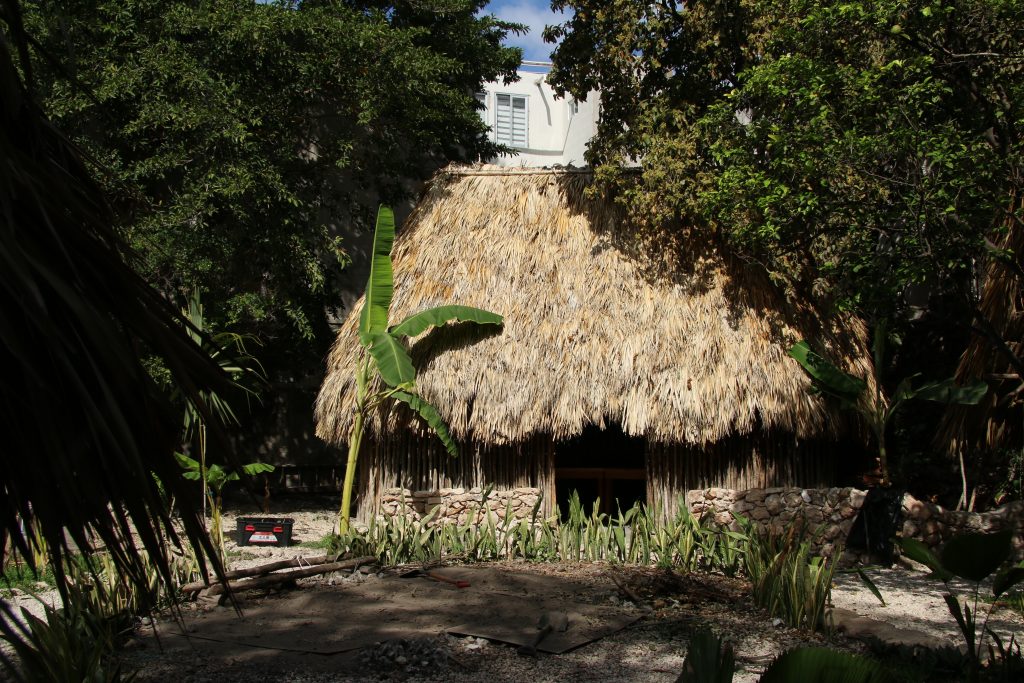
A little pueblo in the back yard – your clue that you’re not somewhere else is the building poking out between the trees

One of the chozas and the display

Inside the choza: here we have an explanation of recado verde

There’s cooking going on right now, under there.

Pueblo in the foreground with a giant hotel in the background for context

A fizzy but not too sweet opener

Brazo de Reina I

Tamalito known as mucbilpolloI

Mucbilpollo II

Brazo de Reina II

Preparing to uncover the pib
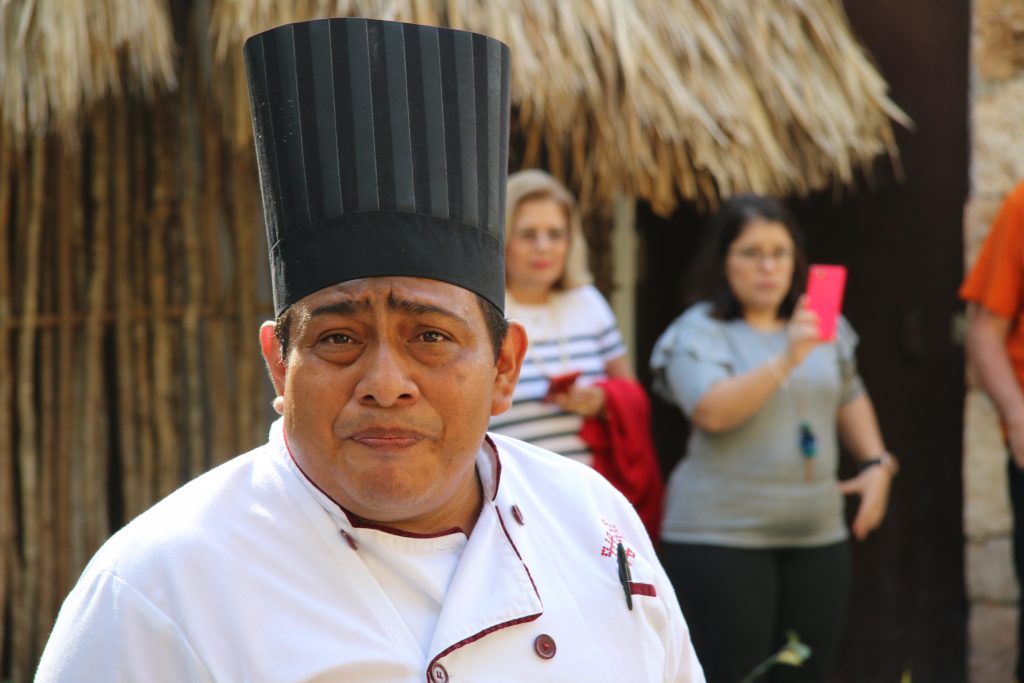
The chef explains what is happening here

After carefully removing the earth, the laminated tin sheet is taken off the pit

With the tin sheet removed, this is what you see. Jabin leaves and branches aromatize the food

A treasure chest, waiting to be opened

Forget gold coins and trinkets. This treasure chest contains something much more memorable


Preparing a sample for those watching

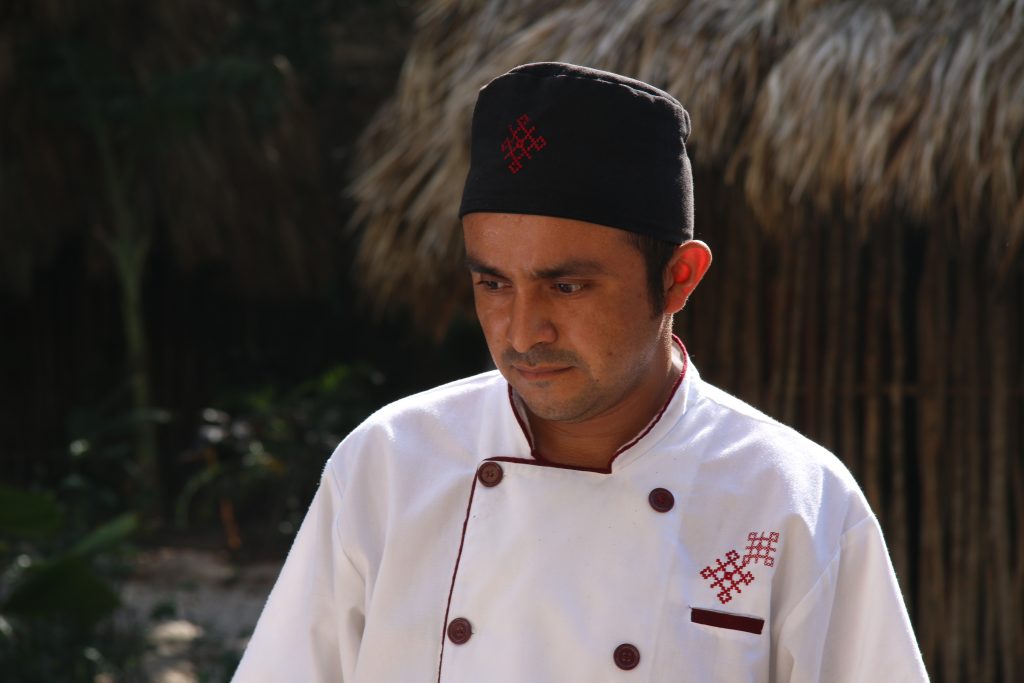

Aguas frescas de chaya y ramon. Yes, ramon.

Puchero!

Queso Relleno!



